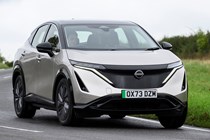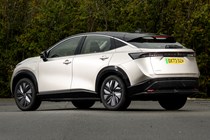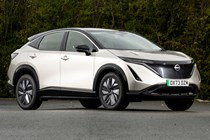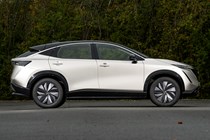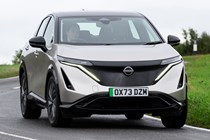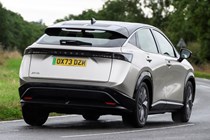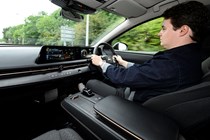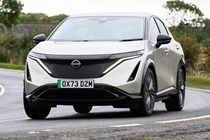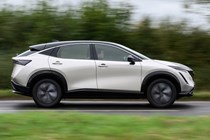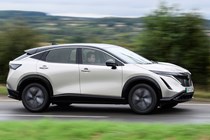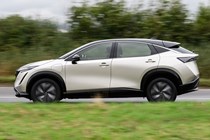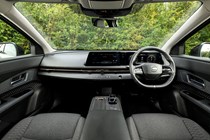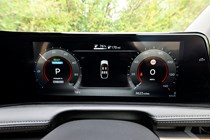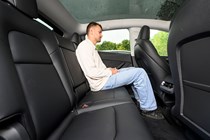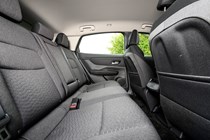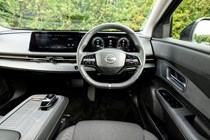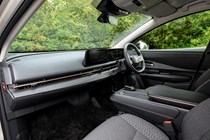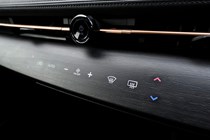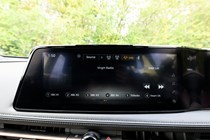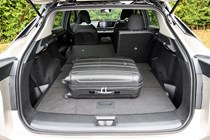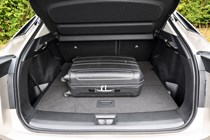
Nissan Ariya engines, drive and performance
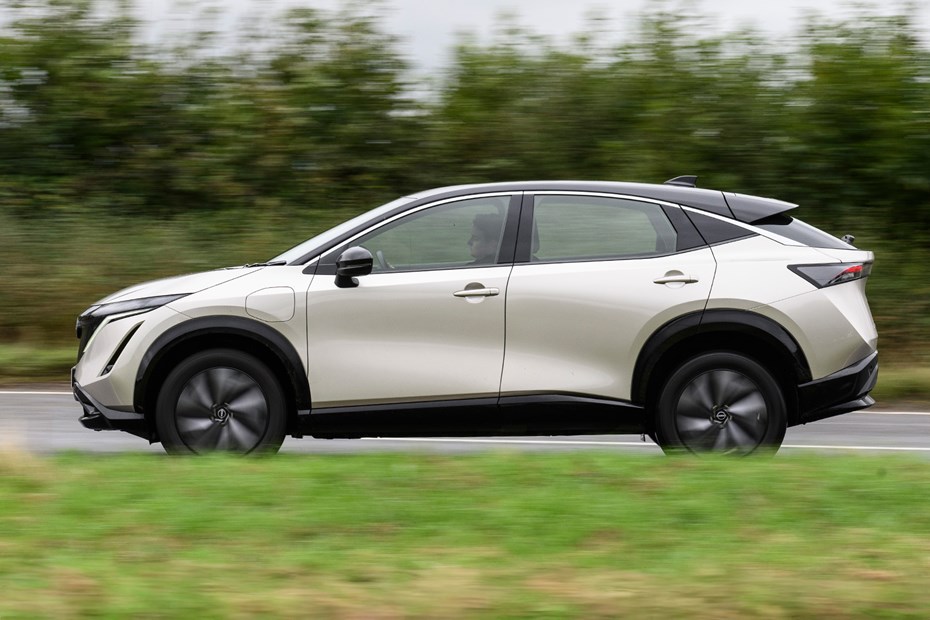
- Entry-level Ariya is usefully quick and responsive
- Performance model adds a degree of excitement
- Refined with a competitive battery range
What power options are there?
The Ariya comes with the choice of two- or four-wheel drive, and therefore two power and torque outputs. The entry-level front-wheel drive 63kWh Ariya develops 217hp and 300Nm for a maximum speed of 99mph and a 0-62mph time of 7.5 seconds. It has a 233-mile range in ‘real-world’ WLTP testing.
The larger (87kWh) battery pack delivers 242hp with the front-drive motor, and this one covers up to 329 miles on a single charge. The extra weight means it’s slightly slower at 7.6 seconds for 0-62mph.
The four-wheel drive model uses what Nissan calls its e-4orce system. Available only with the 87kWh battery in the UK, it has 310hp and 285 miles of range, enough for a 5.7 second 0-62mph time.
What’s it like to drive?
- No model is a sluggard
- Not much front grip
- Ride quality falls apart on rougher roads
Despite being the base level, the single-motor 63kWh model doesn’t really feel slow, and should be enough for most buyers. Like with some other electric cars, there’s significant shove from standstill that easily makes the front wheels spin clumsily. Performance tails off as you approach the national speed limit, with the larger-battery front-wheel drive model feeling much the same.
There’s pronounced bodyroll when cornering briskly, which means when you change direction quickly you’ll feel yourself moving in your seat significantly. You don’t have to push too hard in the 2WD Ariya to get the front tyres to wash wide of your intended line, with the Enyaq and EV6 proving much better for keen drivers. That’s partially down to the Nissan’s rather inconsistently weighted steering.
Ariyas fitted with e-4orce feel far more sure-footed, accelerating without drama from a standstill and feeling significantly quicker than the single motor cars, too. It’s a system set up for traction and stability, so don’t expect to be flinging it sideways like a Ford Mustang Mach-e GT. Instead, you feel the power being managed front and rear with some help from individual wheel braking.

Some time spent on ice and snow (admittedly with cars fitted with winter and studded tyres) proves the effectiveness of the system, even if sometimes you have to accelerate to get the system to work despite it feeling like the worst idea in the world. Turning the stability control ‘off’ allows the car to slide around more, but it’s always there in the background to ensure things don’t get too out of shape.
On smooth, fast roads the Ariya feels acceptable, even with large 20-inch wheels, making it a decent motorway car. However, get it onto more coarsely-textured, challenging roads and its fidgety ride and choppy damping upset the car’s overall serenity, meaning if you’re after a restful driving experience, you’d be better served plumping for an Enyaq.
There are different drive modes that dial the throttle response up and down. Broadly this translates to how hard you need to push the accelerator to achieve full acceleration. In Sport it feels alert and poised, while in Eco it’s much tardier, but does have a positive impact on the car’s range.


